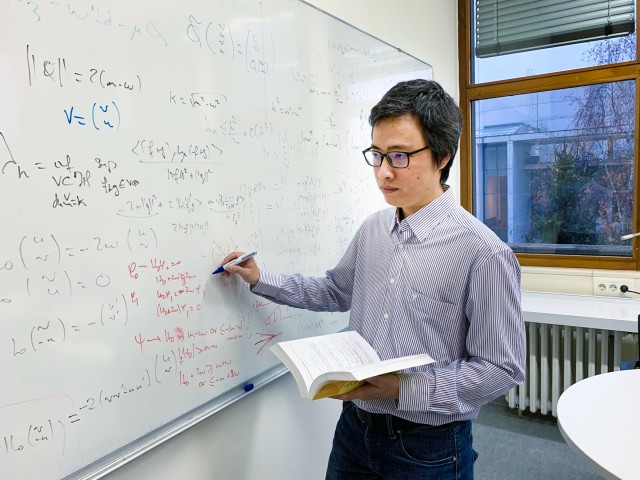Prof. Dr. Phan Thành Nam - LMU München
 © Phan Thành Nam
© Phan Thành Nam Briefly describe the following: your current position, affiliation, your role within MCQST.
I am a mathematical physicist working on spectral and dynamical problems from many-body quantum systems, including atoms, molecules and Bose gases. Within MCQST, my research is associated to Research Unit A (Quantum Information Theory) and Research Unit F (Quantum Matter) where I will develop theoretical methods for complex quantum systems.
How does a typical workday looks like for you as a mathematician?
In a full working day, I will come to office by 9am and come back home around 5pm. Working from home is also normal. A famous mathematician said, “A mathematician is a device for turning coffee into theorems”. I am not a fan of coffee, so I “produce theorems” by reading a lot of research papers, talking to many colleagues and students, as well as walking often to parks to relax and to develop new ideas. I am lucky, as Munich is a very green city.
What was the biggest challenge you faced so far in your research?
One of my favorite topics is the derivation of nonlinear Schrödinger equations from weakly interacting Bose gases. This is a curse of dimensionality where one has to replace a linear equation in high dimensions by a nonlinear one in low dimensions. Since 2013, together with Mathieu Lewin and Nicolas Rougerie in CNRS France, we have developed a general framework to study this issue using Quantum de Finetti Theorem. This tool is famous in quantum information theory but not well known to mathematicians at that time. We solved the ground state problem in 2013, but it took another 7 years to understand the picture at higher temperatures. In the latter, we observed an equilibrium state close to the Bose-Einstein phase transition and expected the emergence of a Gibbs measure built up on the nonlinear Schrödinger functional. Although the heuristic argument is feasible, the rigorous derivation was challenging because we had to implement a semiclassical approximation in infinite dimensions with renormalized terms. The problem was solved in January 2020, based on a new entropy inequality and a novel method to control the correlation of quantum particles. We hope that these techniques will have many applications in the future.
I always try to build my work on a strong combination of physical ideas and mathematical techniques, for which the interaction with many colleagues within MCQST is very fruitful.
Tell us a little about your research and how mathematics are intertwined with MCQST.
Since my research lies between mathematics and physics, it falls naturally to the scope of MCQST. In particular, when working on the derivation of effective theories, I find that heuristic arguments from physicists are often powerful and deep. On the other hand, it is important to derive approximate theories from first principles using mathematical methods because most of us have no personal experience with quantum objects, and in some cases subtle corrections have been revealed. Therefore, I always try to build my work on a strong combination of physical ideas and mathematical techniques, for which the interaction with many colleagues within MCQST is very fruitful.